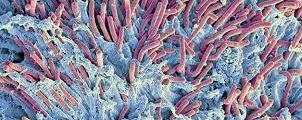
Why We Brush Our Teeth !!!!
Posted on July 16
Why we brush are teeth
This blog post is for all you enthusiastic people out there who want to know the facts behind what we do !!
Dental plaque is a biofilm or mass of bacteria that grows on surfaces within the mouth. It is a sticky colourless deposit at first, but when it forms tartar, it is often brown or pale yellow. It is commonly found between the teeth, on the front of teeth, behind teeth, on chewing surfaces, along the gum line, or below the gum line.
Progression and build-up of dental plaque can give rise to tooth decay – the localised destruction of the tissues of the tooth by acid produced from the bacterial degradation of sugar – and periodontal problems such as gingivitis and periodontitis.
Hence it is important to disrupt the mass of bacteria and remove it. Plaque control and removal can be achieved with correct daily or twice-daily tooth brushing and use of interdental aids such as dental floss and interdental brushes.
Supragingival biofilm: Supragingival biofilm is dental plaque that forms above the gums and is the first kind of plaque to form after the brushing of the teeth. It commonly forms in between the teeth, in the pits and grooves of the teeth and along the gums. It is made up of mostly aerobic bacteria, meaning these bacteria need oxygen to survive. If plaque remains on the tooth for a longer period of time, anaerobic bacteria begin to grow in this plaque.
Subgingival biofilm: Subgingival biofilm is plaque that is located under the gums. It occurs after the formation of the supragingival biofilm by a downward growth of the bacteria from above the gums to below. This plaque is mostly made up of anaerobic bacteria, meaning that these bacteria will only survive if there is no oxygen. As this plaque attaches in a pocket under the gums, they are not exposed to oxygen in the mouth and will therefore thrive if not removed.
Gingivitis: Gingivitis is an inflammatory lesion, it is a common result of plaque build-up around the gingival tissues. The bacteria found in the biofilm elicit a host response resulting in localized inflammation of the tissue. This is characterized by signs of inflammation including a red, puffy appearance of the gums and bleeding due to brushing or flossing.
Gingivitis due to plaque can be reversible by removal of the plaque. However, if left for an extended period of time, the inflammation may begin to affect the supporting tissues, in a progression referred to as periodontitis.
Periodontitis: Periodontitis is an infection of the gums which leads to bone destruction around the teeth in the jaw. Periodontitis occurs after gingivitis has been established, but not all individuals who have gingivitis will get periodontitis
Plaque accumulation is vital in the progression of periodontitis as the bacteria in plaque release enzymes which attack the bone and cause it to break down, and at the same time osteoclasts in the bone break down the bone as a way to prevent further infection.
This can be treated with strict oral hygiene such as tooth brushing and cleaning in between the teeth as well as surgical removal completed by a dental professional.
Caries: Dental Caries is an infectious disease caused primarily by Streptococcus mutans, characterized by acid demineralization of the enamel, which can progress to further breakdown of the more organic, inner dental tissue dentine. This causes holes to appear in teeth and eventually tooth death and abscess formation.
The next series of blogs will explain how we can help you at Hest Bank using the most modern methods to disrupt the biofilm and how you can help yourself at home.
